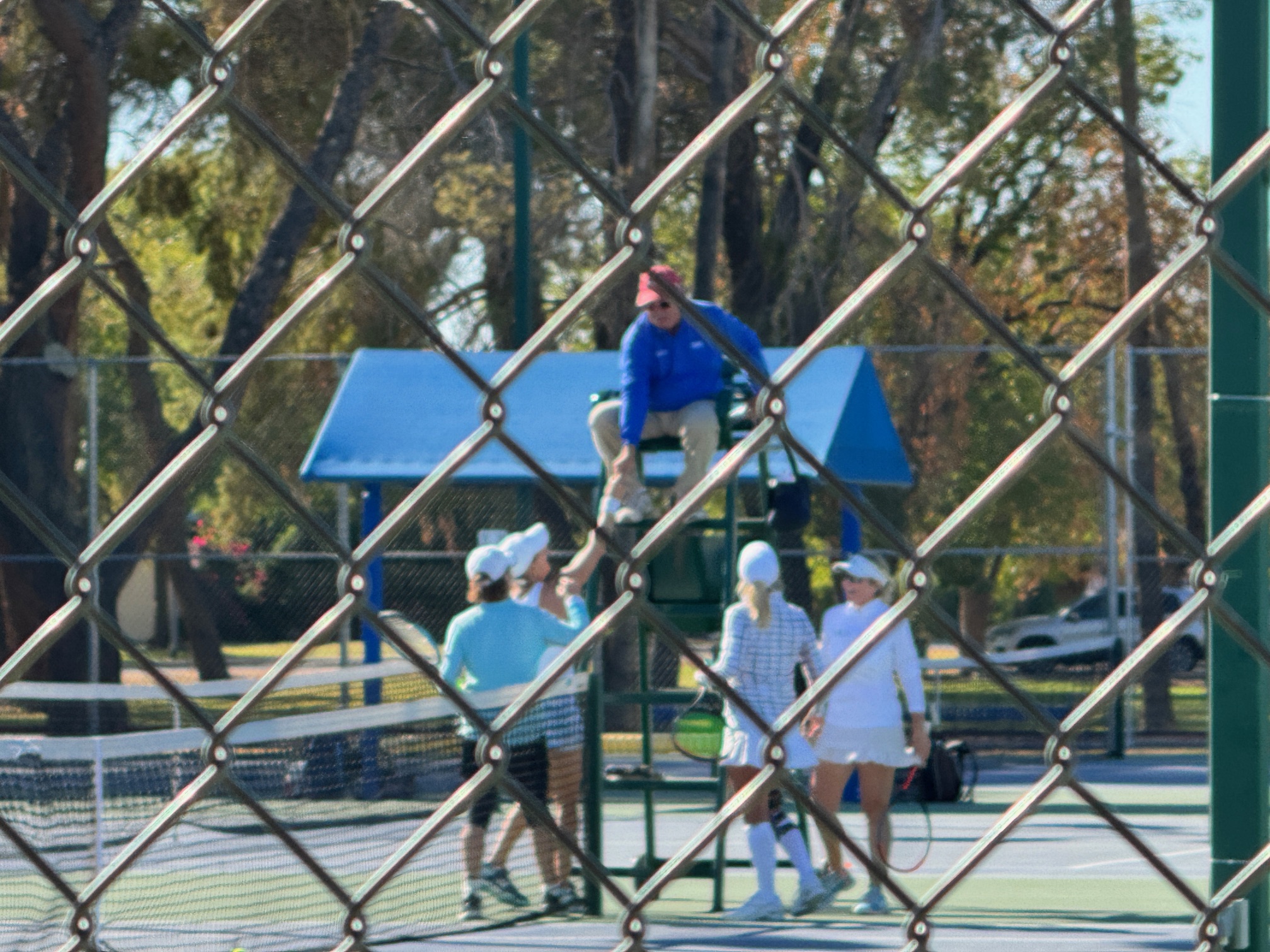To wrap up this weekend’s series of posts about “Looking Beyond the Net,” I am sharing a curious phenomenon I have noticed in recreational league and tournament play. The effect is particularly pronounced in Doubles, though it is also observable in Singles matches. There is a “first mover advantage” when making strategic or tactical adjustments during competition.
Let’s say two Doubles teams without previous knowledge of their opponents meet head-to-head for a league match. During the warmup, both teams should try to glean as much information as possible about the players on the other side of the net. However, the insight from that source will likely be limited. Usually, such matches start with both teams “just playing their game.”
If one team jumps out to an early lead, it is incumbent on the other team to make adjustments. They might start playing more balls to one of the players or alter their own court positioning. They may begin hitting with more or less pace and spin on the ball. The critical thing is that they make changes designed to win more points and games. If what they try initially doesn’t work, they will cycle through other tactics until they find something that does.
Meanwhile, on the other side of the net, the team that jumped out to an early lead becomes entrenched in the idea that their initial strategy was working. As their opponents make adjustments and claws their way back into the match, the team that was winning initially frequently fails to notice that something changed on the other side of the net. They chalk up the tightening score as a lack of execution rather than recognizing that it is time for some modifications of their own.
Often, these teams wait until the early lead, if not the entire first set, is squandered before recognizing the need for change. Even then, the conversations can be revealing as the players try to remember what they were doing that gained them the early lead rather than focusing on the adjustments that are needed at that moment.
While there is certainly merit in sticking with the initial strategy long enough to make an informed decision on whether it is effective, there is danger in sticking with it too long. Additionally, when the other team starts making inroads, the conversation needs to revolve around dissecting what they are doing differently rather than doubling down on what previously worked.
I firmly believe there is an advantage to being the “first mover” when making strategic and tactical adjustments in tennis. It is counter-intuitive to make a change while enjoying a lead, but the best players in Senior Adult tennis do it all the time. They look beyond the net and respond to the challenges their opponents throw at them. They don’t wait until they are losing to start that process.
Throughout 2023, I am exploring the 12 Habits of Highly Successful Tennis Players. A complete summary of all posts on that topic and what is coming up for the remainder of this year can be found on the 12 Habits of Highly Successful Tennis Players homepage.



